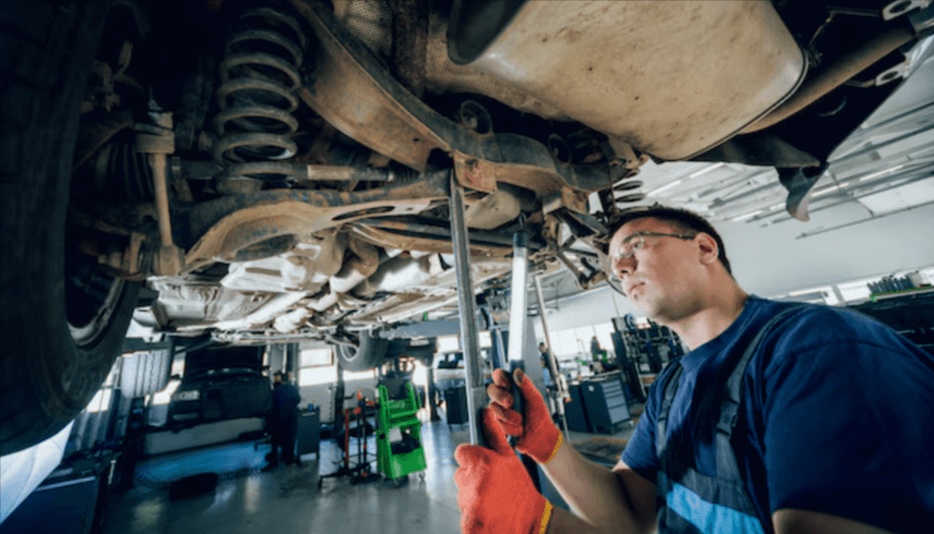Does your Jeep have a noisy compressor or look tilted to one side? Does the vehicle lean forward, especially when you hit the brakes? If the answer to any of these questions is “yes,” you might have problems with the air suspension system.
Air suspension problems can make your rides bumpy and uncomfortable and be costly to repair when left unaddressed for too long. Therefore, it's essential to diagnose your vehicle regularly to ensure it's in peak operating condition.
Common Jeep Grand Cherokee Air Suspension Problems
Some standard Jeep Grand Cherokee air suspension problems to look out for are:
1. Compressor Failure
The air suspension compressor in the Jeep Grand Cherokee functions similarly to the air conditioning compressor in most vehicles. When other parts of the air suspension system fail, the compressor works harder to reduce the impact of the damage. As that continues, the air compressor starts to wear, and the pumping speed reduces.
Replacing a damaged compressor is essential. You should also examine the air dryer on your air suspension to see if it needs replacement.
2. Worn Struts and Shocks
When you drive your Jeep Cherokee on bad roads, the shocks and struts help reduce the vibration and bad handling. The vehicle's road handling is impaired when shocks and struts get damaged, resulting in excessive bouncing and difficulty steering. Replace the struts and shock absorbers to solve this problem.
3. Damaged Air Springs
The air springs sit on top of the vehicle's air suspension system and provide the structural integrity your vehicle needs to maintain stability and prevent sagging. As you continue to use the car, the air springs wear out at the top and bottom, causing leaks or sudden blowouts. This may cause the air compressor pump to overwork.
If you have this issue, you may notice the car sag on one side. Changing the broken spring will help your car retain its level.
4. Leaking Quadra-Lift Suspension
The quadra-lift suspension consists of various parts that may leak with time due to wear and tear. The quadra-lift suspension enables the vehicle to ascend and descend by controlling the airline, air spring and compressor. It may cause a host of complications when it starts to leak, preventing the vehicle from performing optimally. For example, the Jeep may gradually lower when you push it to its top elevated position.
Inspect the air lines to identify leaky areas and fix them immediately. Ignoring this issue can cause severe damage to the system. You may repair the air lines or air springs or replace the compressor, depending on the cause of the damage.
5. Electronic Control Unit or Height Sensor Failure
Jeep Cherokees have an electronic control unit (ECU) or control panel, which controls the entire air suspension system. It receives signals from sensors installed in the front and rear wheels of the vehicle to adjust the height in real-time. Depending on the selected ride mode and the nature of the road, the car may rise or drop to enhance the smooth driving experience.
The height sensors wear out as they constantly move up and down, preventing them from sending the appropriate feedback to the ECU. The ECU may also get damaged, meaning the air springs won't receive the instructions to inflate or deflate your vehicle as needed. You may need to replace the sensors or ECU, depending on the cause of the problem, to restore your vehicle to peak condition.
What Causes Jeep Quadra-Lift Suspension Problems?
The primary cause of Jeep Grand Cherokee air suspension problems is extreme wear. The air suspension system comprises multiple components that are interconnected to perform at high intensities. This means damage in one part will likely affect the others, especially when not fixed immediately. This is a common problem in most vehicles.
Another typical cause of Jeep quadra-lift suspension problems is puncturing. Various parts of the air suspension system are made of solid rubber, which may be damaged by sharp objects or vehicle overload. When the rubber tears, the system entire system may malfunction.
Jeep Grand Cherokee Air Suspension Reset
It's good to reset the suspension when your Jeep Grand Cherokee air suspension undergoes significant repair. The suspension warning light can come on even when the air suspension is in perfect condition, so you may need to reset the air suspension system then, too. Follow these steps:
How to Fix Your Jeep Grand Cherokee Suspension Problems
Here are two ways to fix your Jeep Grand Cherokee suspension issues:
1. Use OEM and Aftermarket Air Suspension Replacements
One approach to fixing your air suspension problems is to replace damaged components with new ones. However, the challenge is that because the components are interconnected, damage to one part can affect the others. In some cases, you may need to replace many parts of the air suspension system or other impacted parts of the vehicle.
For example, a broken suspension puts added strain on your brakes because it absorbs less force when you stop, causing your brake system to fail. A damaged suspension may also affect your steering system, as your vehicle requires more effort to handle.
These components can be a steep investment. One OEM replacement air spring can cost over $800 — you may need four of those, plus replacements for the other broken parts.
2. Convert Your Suspension to Traditional Coil Springs
Traditional coil springs offer enhanced mechanical performance than other strut kinds because they eliminate the need for installing complex interconnected systems made of flexible rubber and computers. Steel struts and perfectly tuned coil springs can last many years. They're less expensive and easier to fix.
Strutmasters Conversion Kits
Strutmasters' Jeep Grand Cherokee four-wheel suspension conversion kit is the ideal solution to your air suspension problems.
The conversion kit includes two fully assembled front struts with premium steel coil springs, two premium American-made steel coil springs, two premium rear shocks, a suspension warning light fix module and all necessary accessories. You also get detailed instructions, including diagrams and pictures.
With this kit, you can convert your entire factory air suspension system for less than the price of replacing one air system component at the dealership.
Shop Jeep Cherokee Air Suspension Conversion Kits
Strutmasters is an industry leader with over two decades of experience manufacturing suspension systems. We specialize in air-to-non-air suspension conversion kits and offer affordable yet reliable total solutions to fixing complex air, electronic, magnetic and hydraulic suspension systems. Our Jeep Cherokee conversion kit is designed with glide-ride technology to ensure smooth rides every day.
Shop our conversion kits now or call +1 866-597-2397 for assistance!








